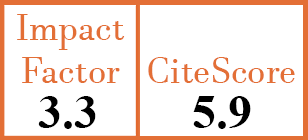Full Papers
A paradigm of difficult-to-treat rheumatoid arthritis: subtypes and early identification
M. Novella-Navarro1, V. Ruiz-Esquide2, G. Torres-Ortiz3, C.A. Chacur4, C. Tornero5, E. Fernández-Fernández6, I. Monjo7, R. Sanmartí8, C. Plasencia-Rodríguez9, A. Balsa10
- Rheumatology Department, Hospital Universitario La Paz, Madrid, and Inmuno-Rheumatology Research Group, Hospital La Paz, Institute for Health Research - IdiPAZ, Madrid, Spain. mnovellanavarro@gmail.com
- Rheumatology Department, Hospital Clínic, Barcelona, Spain.
- Rheumatology Department, Hospital Universitario La Paz, Madrid, Spain.
- Rheumatology Department, Hospital Clínic, Barcelona, Spain.
- Rheumatology Department, Hospital Universitario La Paz, Madrid, and Inmuno-Rheumatology Research Group, Hospital La Paz, Institute for Health Research - IdiPAZ, Madrid, Spain.
- Rheumatology Department, Hospital Universitario La Paz, Madrid, and Inmuno-Rheumatology Research Group, Hospital La Paz, Institute for Health Research - IdiPAZ, Madrid, Spain.
- Rheumatology Department, Hospital Universitario La Paz, Madrid, and Inmuno-Rheumatology Research Group, Hospital La Paz, Institute for Health Research - IdiPAZ, Madrid, Spain.
- Rheumatology Department, Hospital Clínic, Barcelona, Spain.
- Rheumatology Department, Hospital Universitario La Paz, Madrid, and Inmuno-Rheumatology Research Group, Hospital La Paz, Institute for Health Research - IdiPAZ, Madrid, Spain.
- Rheumatology Department, Hospital Universitario La Paz, Madrid, and Inmuno-Rheumatology Research Group, Hospital La Paz, Institute for Health Research - IdiPAZ, Madrid, Spain.
CER15865
2023 Vol.41, N°5
PI 1114, PF 1119
Full Papers
Free to view
(click on article PDF icon to read the article)
PMID: 36377568 [PubMed]
Received: 19/05/2022
Accepted : 12/09/2022
In Press: 13/11/2022
Published: 03/05/2023
Abstract
OBJECTIVES:
Multiple failures to biologic or targeted specific disease-modifying anti-rheumatic drugs (b/tsDMARDs) that lead to difficult-to-treat rheumatoid arthritis (D2TRA) may be the result of multi-drug inefficacy or reflect treatment problems related to adverse events, comorbidities, and/or poor adherence. We aimed to characterise a cohort of D2TRA patients in clinical practice, to analyse the differences between D2TRA due to inefficacy versus D2TRA from other causes, and to compare them with non-D2TRA.
METHODS:
The D2TRA group included patients who were receiving ≥2b/tsDMARDs due to inefficacy (D2TRA-inef cacy) or because of adverse events, poor adherence, contraindications, comorbidities, drug-intolerance, etc. (D2TRA-other). Patients who achieved low disease activity or remission with the rst bDMARD were classified as non-D2TRA patients. For all patients, demographic, clinical characteristics and laboratory parameters were assessed prior to starting the rst b/tsDMARD. Descriptive analysis was performed and bivariate logistic regression models were assembled.
RESULTS:
In total, 253 patients were included: 131 non-D2TRA and 122 D2TRA [86 (70.5%) D2TRA-inefficacy and 36 (29.5%) D2TRA-other]. Comparison of the two groups of D2TRA patients: no differences in gender, age at start of b/tsDMARD or age at RA diagnosis were found; this was also true of socioeconomic status, frequency of anxiety-depression and other comorbidities. Patients categorised as D2TRA-other had less extra-articular manifestations than D2TRA-inef cacy, as well as lower values of DAS28 at the start of the rst b/tsDMARD. Comparisons of Non-D2TRA patients versus D2TRA-other resulted in the following observations: no differences in sociodemographic characteristics were evident nor were there any differences in terms of disease activity.
CONCLUSIONS:
Patients with D2TRA-other are indistinguishable from non-D2TRA patients at baseline, indicating the former cohort does not appear to have any predictive value during the early stages of b/tsDMARD treatment, unlike what occurs in patients with D2TRA-inefficacy.



